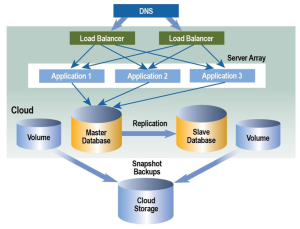
Microsoft has unveiled Radius, an open-source, cloud-native application platform that enables developers, IT teams, and platform engineers to collaborate on delivering and managing applications across public clouds and on-prem infrastructure.
Radius was introduced October 18 by the Microsoft Azure Incubations team. The platform supports deployment of applications across private clouds and the Microsoft Azure and Amazon Web Services clouds, with support for more cloud providers to come.
Radius is intended to provide the following benefits in its initial release:
- A simplified and consistent development experience, with the same application definition used to deploy to any cloud provider or on premises.
- Standardizing and scaling of deployments with a clear separation of concerns between developers and operators. Pre-definable templates automate the provisioning of infrastructure and environment configurations.
- An application graph that provides visibility into the resources and relationships that comprise an application.
Radius, accessible at radapp.io, is designed to address a situation in which applications have become more complex, and managing them in the cloud has become increasingly difficult. Cloud-native applications are composed of interconnected services and deployed to multiple public clouds and private infrastructure.
While Kubernetes is a key enabler of cloud-native apps, many users build abstractions over Kubernetes, usually focused around compute, to get around its limitations, Microsoft said. But Kubernetes has no formal definition of an application, mingles application and infrastructure concepts, and is complex. Developers also often find their applications need more than Kubernetes, including support for dependencies such as APIs, front ends, key-value stores, and caches, the company said.
Radius supports Kubernetes and infrastructure tools such as Terraform and Bicep, integrates with CI/CD systems such as GitHub Actions, and helps developers see and understand all of the components of their applications. When new components are added, Radius automatically connects them, taking care of permissions, connection strings, and other issues, Microsoft said.
Further, Radius ensures that cloud infrastructure used by applications meets requirements for costs, operation, and security. These requirements are captured in “recipes,” which are defined by IT operators, platform engineers, or security engineers. Documentation for the Radius project can be accessed from GitHub.
Copyright © 2023 IDG Communications, Inc.


